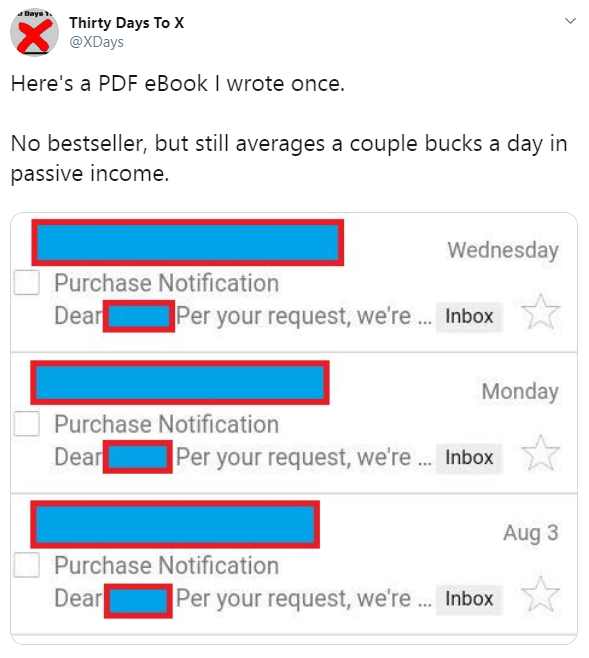Read any business book and you’ll encounter terms like “Margin of Safety” or “Moat.” Much like “Guns and Butter,” these are keywords which come across as confusing or esoteric. Because of this, today’s article explains what a moat is and how to develop one of your very own.
If you have any interest in business (no matter what type), this is one guide you don’t want to miss.
What Is A Moat (Margin Of Safety) And How To Build Yours

(200+ Years Later And These Ramparts Are Still Standing)
The terms “Moat,” “Intrinsic Value,” and “Margin of Safety” are all somewhat interchangeable. They describe the unique advantage that makes your business impossible to copy. This is anything from the sheer size of a company (think Coca-Cola or Disney), the location (a beachfront condo is always worth more than one that’s five blocks away), or public perception (Apple makes the best computers).
While a moat isn’t essential for running a business, it helps considerably. Having one keeps you in the game long-term.
Bad Margins Of Safety
If you built your business following an exact blueprint, I have some bad new for you. There’s no moat. Information products are the perfect example of this. A good title or sales pitch is all it takes to sell many books, courses, or affiliate offers. This means that someone with slightly more vivid writing skills can often dethrone you. Especially in realms like: Self-published Kindle books, blogging, YouTube, social media marketing, etc…
Erotica authors are notorious for this. Someone pens “Satisfying My Horny Neighbor,” and they’re immediately one-upped by “Pounding My Super Hot, Ultra Kinky, No-Limits Neighbor.” Sounds stupid, but improving on the title and cover for an already popular book is a legitimate strategy in this genre. Same goes for self-improvement. You’ll see a clear escalation from “How To Make $100 Per Day Online” to “How To Make $1,000 Per Day Online,” to “How To Make $10,000 Per Day Online.” And many of these books or courses are basically the same information repeated again, just with a more captivating offer.

(How-To Books Often Sell Due To The Title And Description Alone)
On a personal level, I’ve noticed more and more Twitter gurus mentioning long-term investing or REITs. Something that wasn’t talked about much (in this corner of the web) until I penned a few articles on the subject.
To summarize, if you have a skill or knowledge that’s easily learned or replicated, your margin of safety is incredibly slim. Because anyone can copy you.
What Is A Good Moat?
Creating a good margin of safety is easy. All you need to do is master a skill or preform an activity most people can’t do. Any Western reader of this blog can easily befriend a foreign president, general, or mogul. If they’re willing to visit an obscure and out of the way nation.
In business, real estate and physical goods offer excellent margins of safety. The costs and paperwork discourage most people from these ventures. I’m currently working on a project and feel like Danny Ocean plotting elaborate heists. There’s a lot of detail and nuance that makes these ventures hard to replicate.
Boring businesses also offer a margin of safety.
This is why great investors like Peter Lynch or Warren Buffett buy gravel pits instead of tech companies. There’s little interest, and thus no competition. You can rent a wood-chipper, mulch a bunch of branches, and then sell the compost as a nice side business. It’s lame, and unsexy, but it’s much easier than trying to launch a blog or become a YouTube star.
Expertise is another great moat. If you are a top lawyer or programmer, you can set your rates as high as you want. This is obviously the hardest route to go, since much of it hinges on genetic factors outside your control. But, this is also a massive moat for those with natural talent.
Final Thoughts
There’s nothing wrong with crafting an information business or starting niche sites. However, don’t be surprised when the income dries up or copycats impede you. With these ventures, anyone can plagiarize you or rip-off your ideas. Entire Twitter accounts build up their own up five figure followings by copy/pasting content from big names like Ed Latimore, Alexander Cortes, and LifeMathMoney (just to name a few).
Same goes for blog or YouTube content. You deal with imitators, and you’re often at the mercy of algorithms or policy changes outside your control.
If you want to build a long-term money machine, you need to develop your moat. This is something technically complicated (think building a physical brand vs dropshipping), expensive (real estate), or so boring and obvious nobody else wants to do it (tax preparation or lawn care services).
Whatever your moat, make sure it offers a serious advantage that’s extremely hard to recreate.